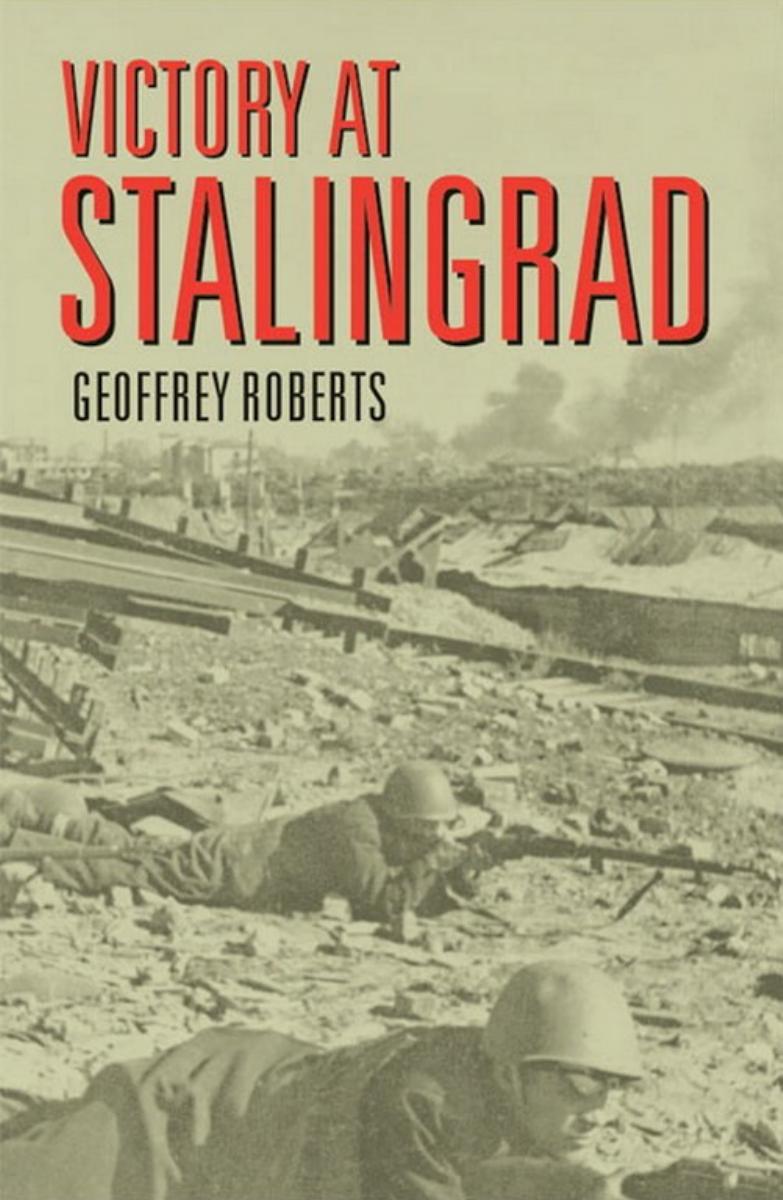Victory At Stalingrad by The Battle That Changed History

Author:The Battle That Changed History
Language: eng
Format: mobi, epub, pdf
Published: 2008-08-24T01:33:30+00:00
chapter six
A F T E R M A T H :
revenge and retribution
on the road to Berlin,
1943 – 5
PE4104 ch06.qxd 16/9/02 16:35 Page 138
PE4104 ch06.qxd 16/9/02 16:35 Page 139
AFTERMATH: REVENGE AND RETRIBUTION
The Red Army’s victorious march to Berlin began with a
series of setbacks. In January 1943 the Soviets launched a
general offensive in the southern theatre. Building on
Operation Little Saturn, the ambitious aim was to entrap,
encircle and destroy all the German armies in the south.
According to John Erickson ‘the Soviet command planned to
entomb an estimated seventy-five German divisions in the
Ukraine’ (1983, p.44).
At first all went well. On 26 January Voronezh was retaken.
This was followed by the rout of the Hungarian 2nd Army
guarding the Germans’ flanks in this sector. On 14 February the Soviets retook Rostov and the next day the Germans
evacuated Kharkov. But the Germans had hung on long
enough in Rostov to evacuate Army Group A from the
Caucasus and in mid-March they were able to launch a
counter-attack which recaptured Kharkov (the city changing
hands for the third time) from the Soviets. By this time the Soviet counteroffensive was petering out and all operations were grinding to a halt in the spring mud of the Rasputitsa (‘the time of bad roads’). When the smoke had cleared in spring 1943 the Germans occupied more or less the same positions and front line as they had held in June 1942 on the eve of Operation Blau. After nearly a year of struggle in the south the Germans had gained precisely nothing, at the cost of innumerable armies and divisions, and of a crushing defeat at Stalingrad from which they would never recover.
The main German commander in the south was von
Manstein and, thanks mainly to his generalship, the surviving forces of the Wehrmacht were able to stage a remarkable 139
PE4104 ch06.qxd 16/9/02 16:35 Page 140
VICTORY AT STALINGRAD
defensive recovery and stave off complete disaster in the
Stalingrad theatre. Despite the catastrophic defeat at
Stalingrad, the Wehrmacht remained a formidable fighting force. It was not a force capable any more of winning the war or even of threatening the Soviet strategic position, but it was more than capable of staging a fighting retreat and of inflicting considerable damage on its way back to Germany.
After this post-Stalingrad setback to their grand plans Stalin and the Stavka seemed to have finally learned the lesson that the war on the Eastern Front would be won gradually and incrementally rather than by a revolutionary change in the
strategic situation. German-style Blitzkrieg was abandoned and there was a return to the traditional Soviet doctrine of ‘consecutive operations’. Lightning thrusts by armoured formations were not ruled out, but the emphasis was on posi—
tional forward movement. Hence, the somewhat surprising
Soviet decision to remain on the strategic defensive in 1943, awaiting the Germans’ next move, with the intention of anticipating it, defeating it, and using it as a launchpad for a major counter-attack. Again, Zhukov and Vasilevskii were the masterminds of Soviet strategy and tactics.
The German move came at the Battle of Kursk in July 1943.
The town of Kursk
Download
Victory At Stalingrad by The Battle That Changed History.epub
Victory At Stalingrad by The Battle That Changed History.pdf
This site does not store any files on its server. We only index and link to content provided by other sites. Please contact the content providers to delete copyright contents if any and email us, we'll remove relevant links or contents immediately.
| Africa | Americas |
| Arctic & Antarctica | Asia |
| Australia & Oceania | Europe |
| Middle East | Russia |
| United States | World |
| Ancient Civilizations | Military |
| Historical Study & Educational Resources |
The Radium Girls by Kate Moore(11639)
100 Deadly Skills by Clint Emerson(4700)
The Templars by Dan Jones(4561)
Rise and Kill First by Ronen Bergman(4553)
The Doomsday Machine by Daniel Ellsberg(4253)
The Rape of Nanking by Iris Chang(4025)
Killing England by Bill O'Reilly(3901)
Hitler in Los Angeles by Steven J. Ross(3803)
Stalin by Stephen Kotkin(3731)
12 Strong by Doug Stanton(3420)
Hitler's Monsters by Eric Kurlander(3172)
Blood and Sand by Alex Von Tunzelmann(3060)
Darkest Hour by Anthony McCarten(3019)
The Code Book by Simon Singh(2869)
The Art of War Visualized by Jessica Hagy(2845)
Hitler's Flying Saucers: A Guide to German Flying Discs of the Second World War by Stevens Henry(2626)
Babylon's Ark by Lawrence Anthony(2435)
The Second World Wars by Victor Davis Hanson(2423)
Tobruk by Peter Fitzsimons(2380)
